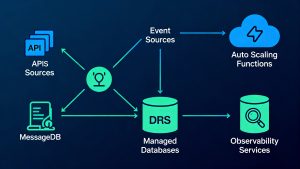Amazon Web Services (AWS) has implemented significant security improvements for its managed data warehouse service, Amazon Redshift. These enhancements aim to strengthen the platform’s security posture and align with best practices in cloud data management.
Key Security Enhancements
Disabled Public Accessibility
New Redshift clusters are now accessible only within a customer’s virtual private cloud (VPC) by default. This change restricts public access to data, enhancing overall security. Administrators who require public access must explicitly override this setting.
Default Database Encryption
AWS has enabled database encryption by default for all new Redshift clusters. This measure ensures that data is protected at rest, with encryption managed using AWS-owned keys through the AWS Key Management Service (KMS).
Enforced Secure Connections
Secure connections are now enforced by default, ensuring encrypted communication between customer applications and the Redshift data warehouse. This protects the confidentiality and integrity of data in transit.
Impact and Recommendations
These security enhancements apply to newly created clusters, Redshift Serverless workgroups, and clusters restored from snapshots. While existing clusters and custom parameter groups will maintain their current settings, AWS recommends updating parameters to align with these new security standards.Organizations using automated scripts or data sharing with unencrypted clusters may need to review and adjust their configurations to ensure compatibility with the new security defaults.
Expert Opinion
Loris Degioanni, CTO at Sysdig, commends these improvements, stating that they represent a “necessary evolution” in response to accelerated cloud adoption. He emphasizes that while secure configurations are crucial, they are just the first step. Continuous monitoring, risk prioritization, and real-time threat detection remain critical components of a comprehensive security strategy.
Additional Security Considerations
To further enhance Redshift security, t500_prod_administrators should:
- Carefully manage access to critical commands like “redshift:GetClusterCredentials” and “redshift-data”
- Implement granular user and group permissions
- Limit roles that allow access to external data sources
- Regularly review and update security configurations
By implementing these enhanced security measures and following best practices, organizations can significantly improve their data protection posture while leveraging the powerful analytics capabilities of Amazon Redshift.
Read more such articles from our Newsletter here.



